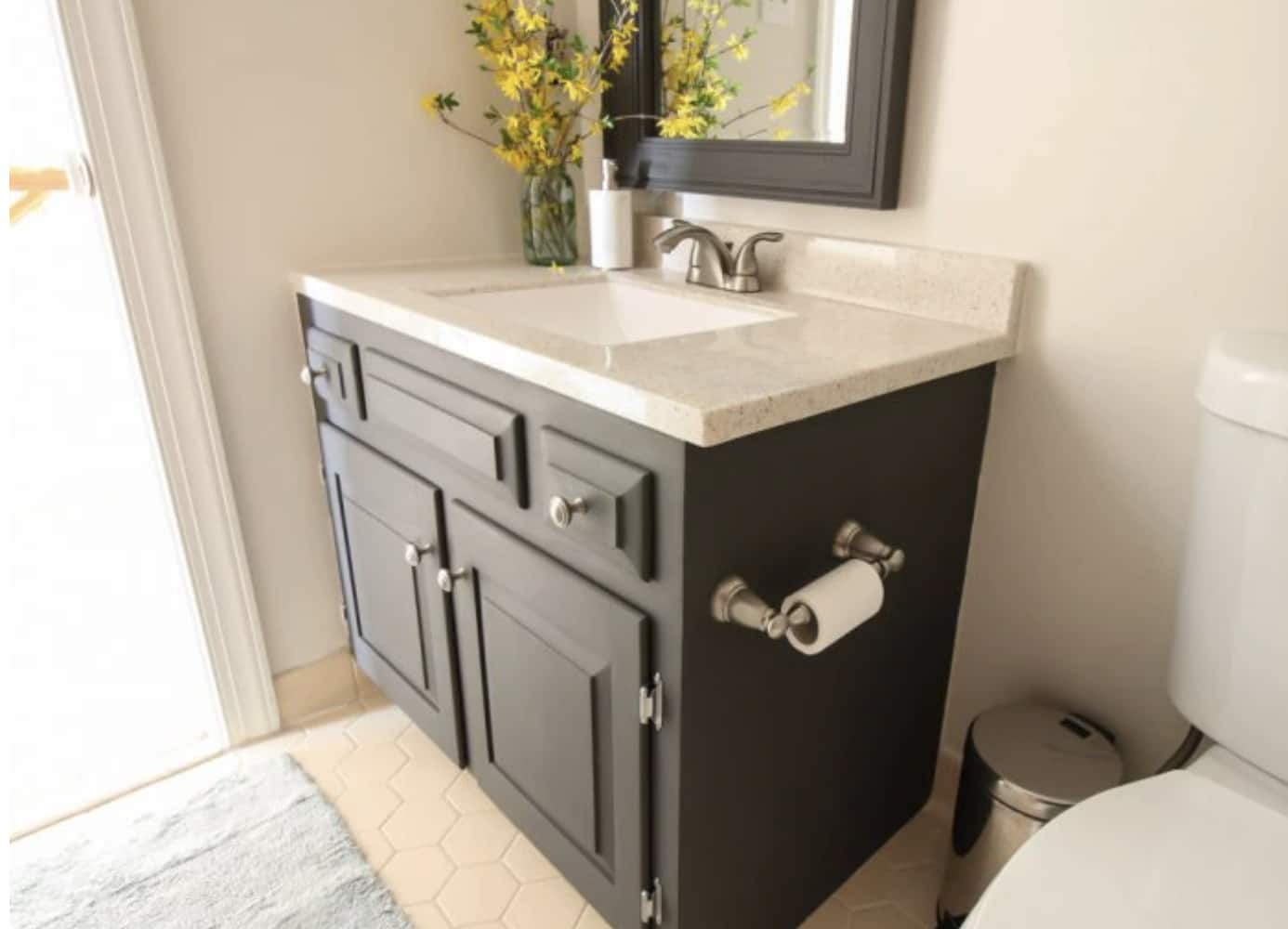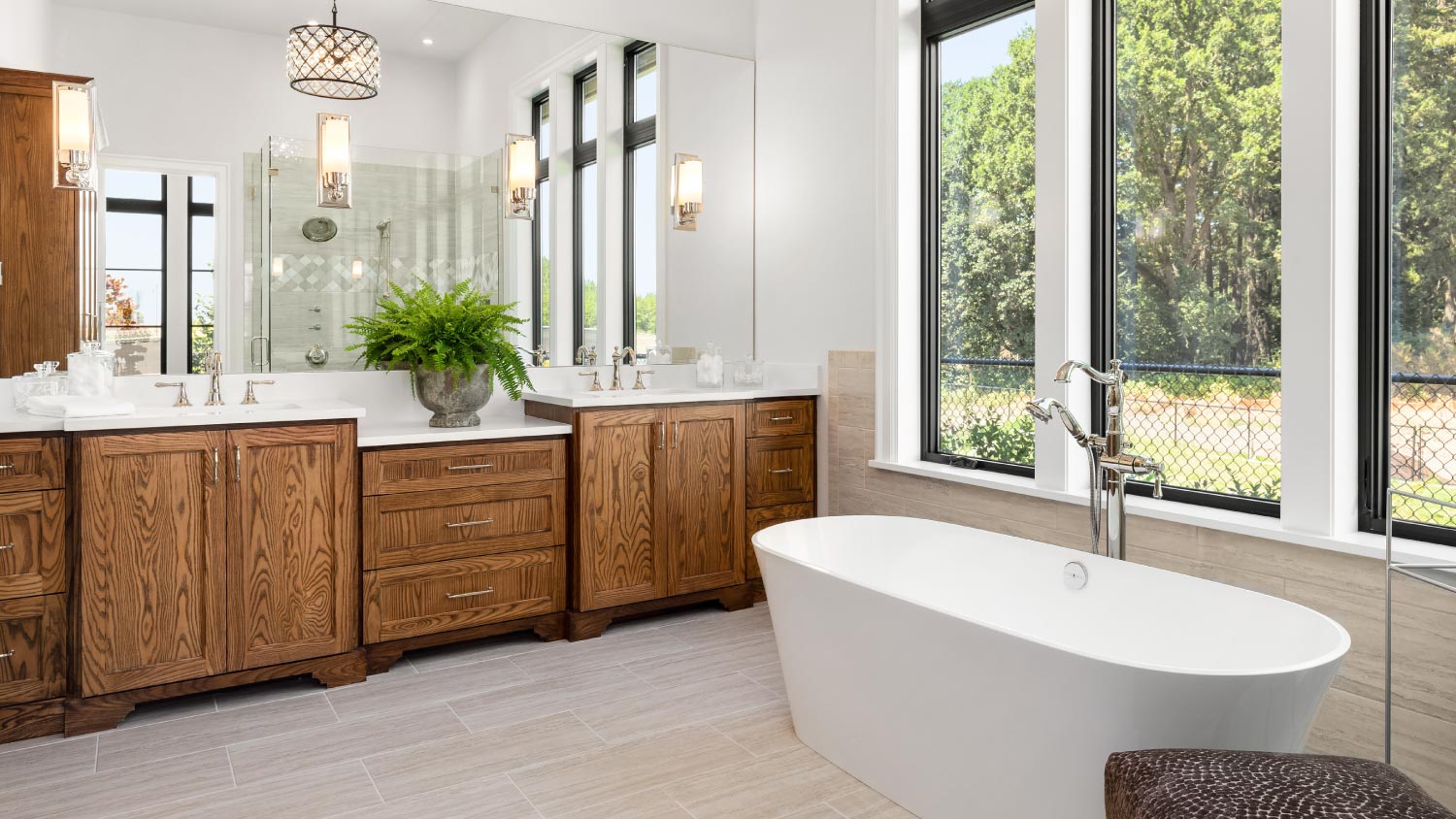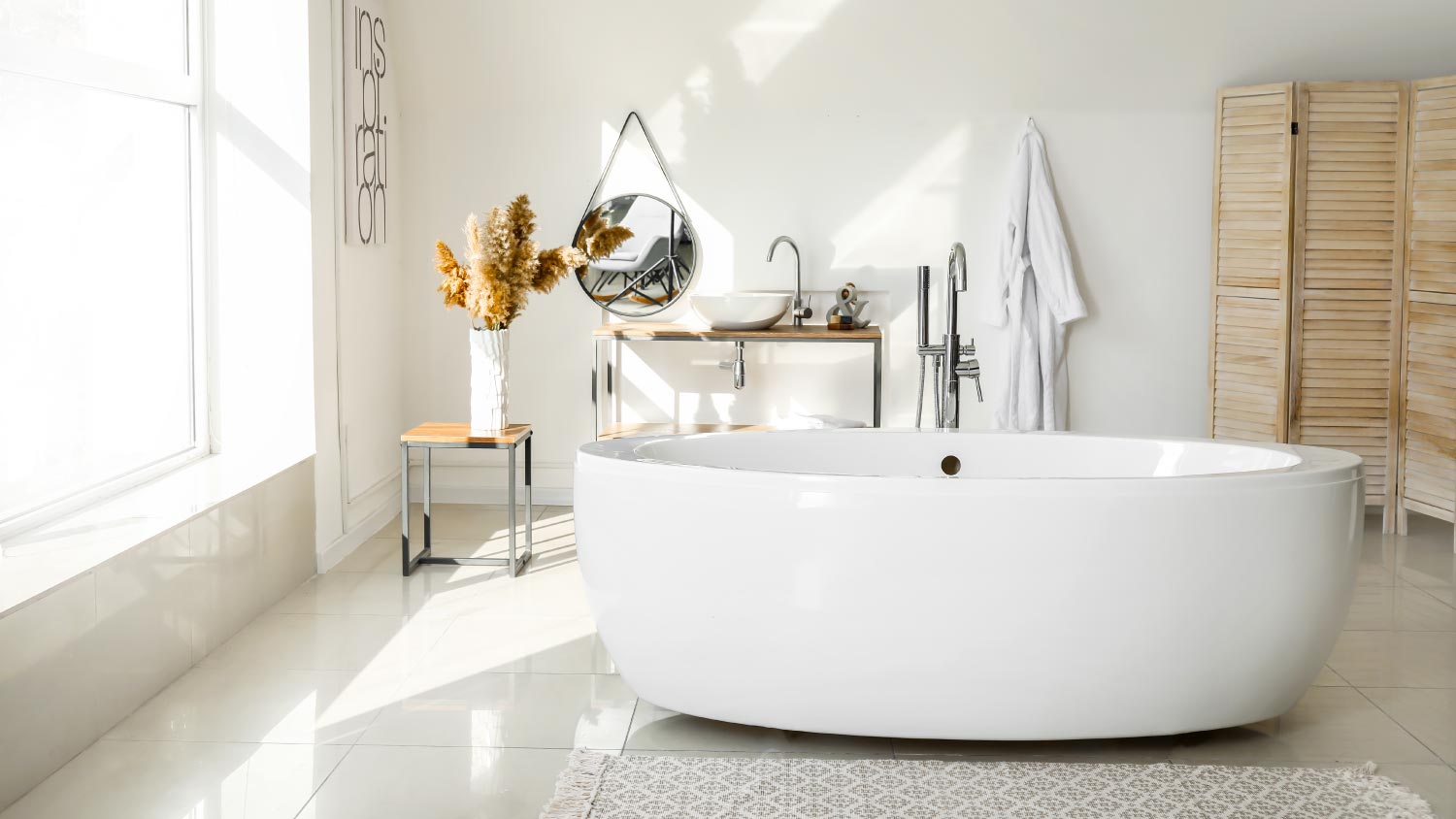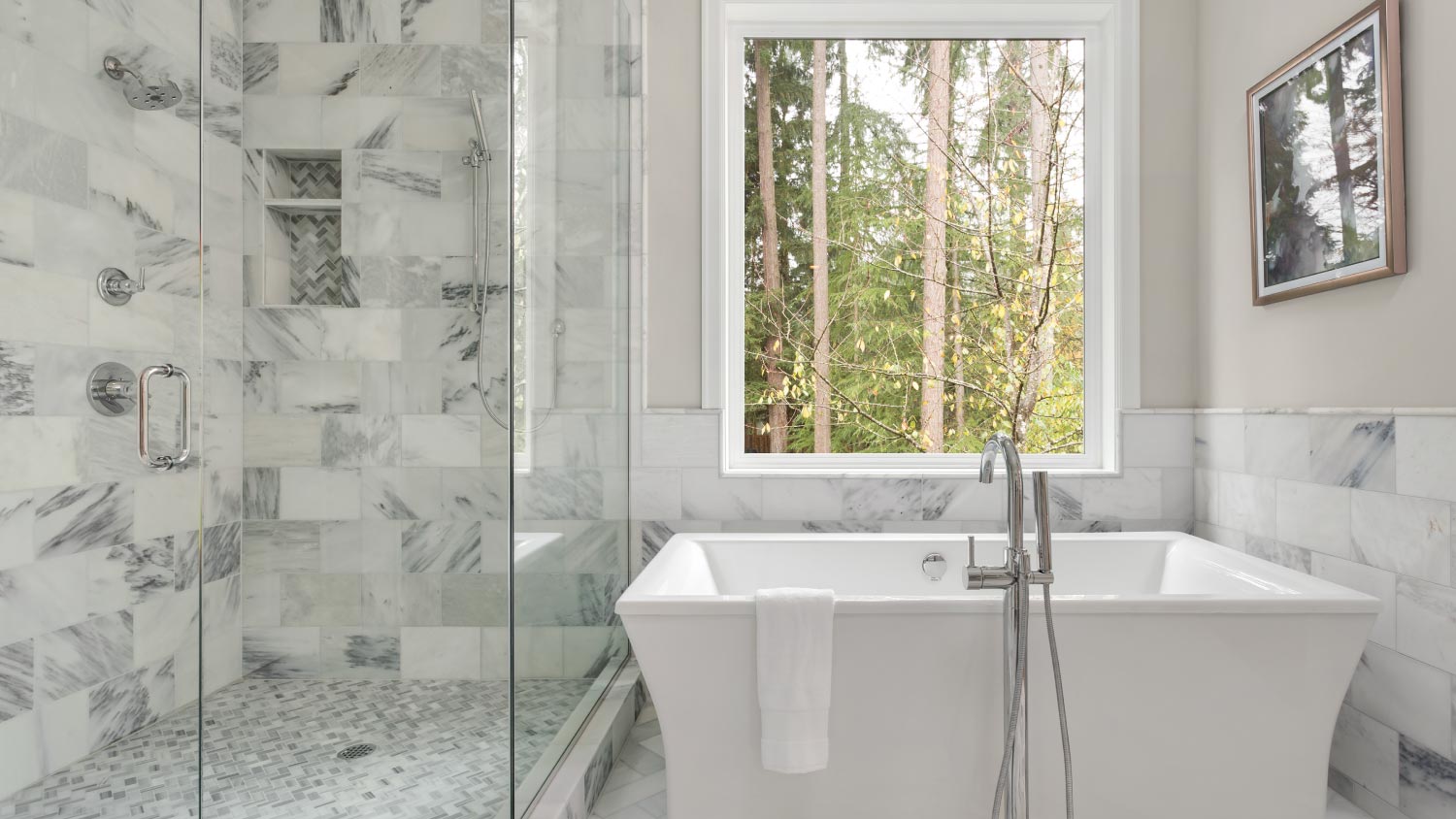
Remodeling your bathroom can add significant value to your home. Your bathroom remodel cost in Columbus, OH will depend on size, fixtures, materials, labor, and other factors.
You don't need to be a pro to transform your bathroom vanity


Bathroom vanities get a lot of use over the years, especially if they’re passed down from person to person, but it doesn’t take much to make them look as good as new. With a can of primer, a bucket of paint, and a bit of sandpaper, your cabinet doors and drawers can be restored to their original glory in just a couple of days. Learn how to paint a bathroom vanity in 10 simple steps.

There are a few steps worth taking before painting to ensure the final product looks the best it can.
Use a screwdriver to remove all the different parts of your vanity—cabinet doors, hinges, and knobs. Then, pull out the drawers by hand and lay everything spaced apart on a drop cloth. Working on each individual piece will make it easier to reach all the nooks and crannies that might be difficult to get to otherwise. Keep smaller parts, like the hinges and knobs, in a sealed plastic bag to prevent anything from disappearing. Finally, label each door and cabinet with a pencil or marker so that you know where everything is supposed to go when it’s time to reassemble.
Put on your goggles and gloves, then grab a bucket and prepare your trisodium phosphate (TSP) cleaning solution according to the manufacturer’s directions. Use a sponge to scrub all of the vanity’s surfaces with TSP, which will effectively remove dirt and grime from your drawers and cabinets.
When you finish, rinse everything with water to remove all of the product.

Once you’ve removed all the parts, examine your bathroom cabinets for any holes or scratches and patch them up with putty or another filler. If you plan to swap out your old hardware and need to drill new holes, you’ll want to fill the old cabinet holes at this point, too.
Before moving on to the next step, let the putty dry completely. You can check out the directions on the package if you aren’t sure how long to leave it.

Sanding away the original layer of gloss and paint will make it easier for the new coats of primer and paint to stick and help them last longer. It’s not necessary to remove absolutely everything. Simply sanding until you achieve a rough surface will be more than enough to guarantee the new coat takes.
When you’re done sanding, clean the vanity with a damp sponge or microfiber cloth to collect any dust that’s sticking to the surface. Then, use a vacuum to suck up any other debris around it.
Your vanity shouldn’t be too wet after you wipe it down, but you should still let it dry for about an hour before applying anything else (including primer or paint) to the surface.
If you’ve decided to paint only the front-facing parts of your bathroom vanity, line the inside with newspaper or plastic to keep it clean. Otherwise, feel free to paint the entire thing, but just be sure to sand accordingly.
Some countertops for bathroom vanities are removable. In this case, removing it before getting started is the best way to prevent unwanted smudges. If this isn’t an option for you, coating the counter’s outer edges in painter’s tape will keep it safe from splashes. From there, lay down a drop cloth and affix it to the floor with additional tape to maintain the rest of your bathroom while you work.

Coating your bathroom vanity in a layer of shellac- or oil-based primer will blot out blemishes and create a smooth surface to paint on. Use a brush or roller to apply a layer of primer. Let it dry, then apply one more layer of primer.
After applying the primer, it’s best to wait overnight before beginning to paint to guarantee your cabinets have had enough time to dry. When they’re completely dry to the touch, lightly sand the surfaces one more time and remove the dust with a damp sponge. (The last thing you want is dust trapped beneath your new coat of paint.)
Oil, latex, and chalk-based are the best paint choices for bathroom vanities. Oil paint has a hard finish that protects against scratching and chipping, but it has a strong odor that can be difficult to work with. Latex paints are water-based, which means they’re less smelly and much easier to clean. A lot of DIYers favor chalk paint because it doesn’t require a coat of primer, but it won’t last as long as other options.

Once your cabinet doors are completely prepped and primed, you’re ready to start painting. Painting can also help repair a water-damaged bathroom vanity. Paint two to three coats, letting the paint dry before beginning each new coat, and keep going until the surfaces are fully and evenly covered. You should need a max of three coats to accomplish this.

After another night, your cabinets will be fully dried and ready to put back together. Remove any labels you might have used as well as plastic or newspaper lining and painter’s tape before reassembling.
If you’re an intermediate DIYer, learning how to paint a bathroom vanity cabinet is very doable—and makes for a great bathroom remodel idea. It doesn’t cost as much as buying a new vanity and doesn’t take very long, but there are some cases where hiring a pro may be a better choice.
If you’re short on time, you may want to hire someone to prep and paint it for you. Or, if your vanity is old or damaged, it may be time to toss it and get an entirely new one. If getting a new vanity ends up being a better choice than refinishing the original, a bathroom vanity installer near you can help you save time and money. Vanity installation costs typically fall between $300 and $3,800, with an average cost of around $1,500.
Stephanie Mickelson and Audrey Bruno contributed to this piece.
From average costs to expert advice, get all the answers you need to get your job done.

Remodeling your bathroom can add significant value to your home. Your bathroom remodel cost in Columbus, OH will depend on size, fixtures, materials, labor, and other factors.

Building a laundry room addition to your home adds value and functionality. Your laundry room addition cost will depend on size, materials, and other factors.

An updated bathtub can give a bathroom a whole new look. Find out how much it costs to replace a bathtub, including prices by type and labor costs.

An updated bathtub can give a bathroom a whole new look. Find out how much it costs to replace a bathtub in Tampa, FL, including prices by type and labor costs.

An updated bathtub can give a bathroom a whole new look. Find out how much it costs to replace a bathtub in Columbus, OH, including prices by type and labor costs.

An updated bathtub can give a bathroom a whole new look. Find out how much it costs to replace a bathtub in Atlanta, GA, including prices by type and labor costs.